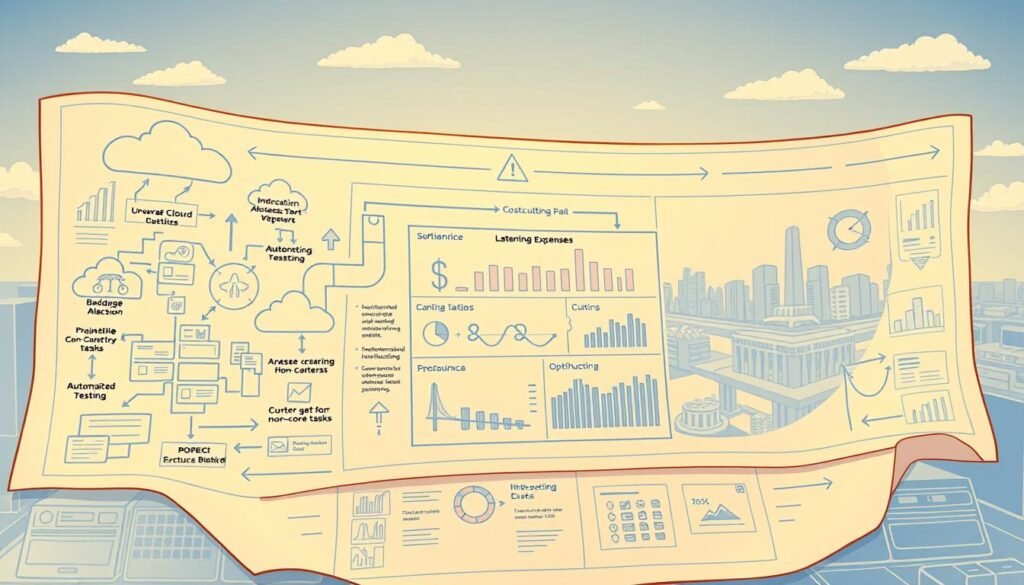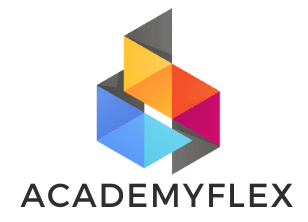Managing cash flow in software development
Why do 82% of small businesses fail? It’s often not because of bad code or poor ideas. It’s usually because of cash flow issues. For software developers, managing cash flow is key to survival and success. The global cash flow management market is expected to reach $25.37 billion by 2027.
Top companies like Agicap and Float have mastered this. They turn financial chaos into clarity. This guide will show you how to thrive in a field where most struggle.
Cash flow is more than just numbers. It’s the heart of your software projects. With the right tools, you can predict cash shortages and meet deadlines. Learn how to build systems that grow with your code and avoid being part of the 82% statistic.
Key Takeaways
- Effective cash flow management reduces project failures caused by financial gaps.
- Software financial strategies like predictive analytics and automated invoicing cut manual work by 40%.
- A custom cash management system costs between $150,000–$400,000 but prevents costly delays.
- Multi-currency support and fraud detection tools protect global tech teams.
- By 2032, cash flow systems will hit $14.18 billion, showing their critical role in tech success.
Understanding the Importance of Cash Flow in Software Development
Cash flow is crucial for any business, but it’s even more vital in software development. Managing cash flow in software development requires careful attention to the unique financial needs of tech projects. Budgeting for software projects must consider factors like changing timelines and client payment plans.
Many projects use milestone-based payments, which can create gaps between expenses and income.
Software projects often face unpredictable development cycles. Changes in scope, technical challenges, and market shifts can disrupt plans. Without managing cash flow in software development, teams might face delays or stop projects early.
Tools like Treasury Management Systems (TMS) help track cash reserves and forecast needs. These systems ensure funds match project phases.
The Unique Financial Landscape of Software Projects
Software projects rely on intellectual capital and iterative workflows, unlike traditional industries. High upfront costs for R&D and talent acquisition strain cash reserves. Startups, for example, might quickly use up funding if they don’t balance development speed with budget.
Metrics like Days Payable Outstanding (DPO) show how well teams manage vendor payments, avoiding cash flow issues.
How Cash Flow Affects Project Success Rates
Good cash flow management lets teams meet payroll, buy licenses, and invest in tools without missing deadlines. Companies like Slack and Asana say cash flow forecasting helped them grow during scaling phases. Data shows 68% of tech firms that track cash flow weekly reduce project abandonment rates by 40%.
Common Cash Flow Challenges in Tech Companies
- Scope Creep: Unplanned feature additions drain budgets without matching revenue.
- Client Payment Delays: Late milestone payments disrupt resource allocation.
- Technical Debt: Unpaid infrastructure costs or outdated systems strain liquidity over time.
Addressing these challenges starts with software project budgeting that prioritizes flexibility. Automating invoicing and using tools like QuickBooks or Xero ensures timely cash inflows. Regular audits of technical debt also prevent hidden cash flow drains.
Key Financial Metrics Every Software Project Manager Should Track
Effective software financial analysis begins with the right metrics. Project managers need to watch these numbers closely. This ensures projects stay financially sound:
- Burn Rate: Reveals cash spent each month. It’s calculated by subtracting revenue from expenses. For example, if expenses are $20k and revenue is $10k, the net burn is $10k. This shows when funding is urgently needed.
- Cash Runway: This metric shows how long cash will last. It’s found by dividing total cash by the burn rate. With $2 million in cash and a $50k monthly burn, you have a 40-month runway. It tells you when you’ll need more funding.
- Days Sales Outstanding (DSO): This measures how long customers take to pay. DSO = (accounts receivable / revenue) × days. A DSO of 18 days means customers pay quickly, boosting cash flow.
- Days Payable Outstanding (DPO): This looks at how long you take to pay suppliers. DPO = (accounts payable / COGS) × days. A DPO of 54 days means delayed payments can improve your liquidity.
Tools like Mosaic and Tipalti make tracking easier. They offer dashboards that simplify
Regularly checking these metrics helps spot trends early. Low DSO or high burn rates mean it’s time to make changes. Using both manual calculations and tools ensures accurate software financial analysis. This helps make timely decisions and prevents cash shortages, supporting long-term growth.
Setting Up an Effective Cash Flow Monitoring System
Monitoring cash flow helps avoid surprises and keeps projects on schedule. A good system uses software financial analysis tools and software cost management to meet business goals. Start by creating a dashboard that shows your financial health in real-time.
Essential Financial Dashboard Components
A dashboard should include:
- Accounts receivable aging reports
- Monthly cash balance projections
- Development milestone timelines tied to payments
- Automated alerts for overdue invoices
Tools like QuickBooks or Panax make tracking easier. For example, Subway increased visibility to 98% with GTreasury’s dashboards, showing real results.
Cash Flow Review Schedule
| Review Type | Frequency | Key Focus |
|---|---|---|
| Daily checks | Every morning | Cash balances and urgent payments |
| Weekly analysis | End of each week | Invoice collection rates and project spend vs. budget |
| Quarterly reviews | Every 3 months | Long-term trends and strategic adjustments |
Assigning Accountability
Roles must be clear:
- Financial team: Maintain dashboards and forecast tools
- Project managers: Link development progress to payment milestones
- Leadership: Approve major spending and review forecasts
Platforms like Jirav and Causal help teams work together. AI tools like Tipalti reduce manual work—American Airlines saved 20% of weekly hours this way.
Regular reviews and the right tools help your team spot risks early. This way, you can adapt quickly. The right system turns data into insights for growth.
Managing Cash Flow in Software Development: Best Practices
Effective managing cash flow in software development needs smart planning. Start by checking your expenses and focusing on features that bring in money fast. Use software financial strategies like phased development to not spend too much too soon.
- Adopt agile financial planning to move funds as project needs change
- Automate invoicing and payment tracking with tools like QuickBooks or Xero
- Require milestone-based payments to match development progress
Aligning Costs with Cash Availability
Balance budget limits by:
- Using contractor teams for non-core tasks to cut fixed costs
- Doing monthly cash flow forecasts to spot gaps
- Sorting clients by payment history to focus on those who pay quickly
Agile Financial Frameworks
Apply Agile to finance by:
| Agile Practice | Financial Application |
|---|---|
| Sprint planning | Weekly cash flow reviews |
| Retrospectives | Monthly expense analysis |
| Stakeholder syncs | Biweekly budget reviews with teams |
Milestone-Financial Integration
Connect milestones to cash flow by:
- Invoice triggers at 25%, 50%, and 75% completion
- Penalties for late payments over 30 days
- Profit analysis after each phase
Regularly check cash conversion cycles to find ways to improve. Focus on automation for instant cash reserve updates. These steps help build strong cash flow for growth.
Cash Flow Forecasting Techniques for Software Projects
Cash flow forecasting is key for planning software revenue projections. It lets teams predict when money will come in and when costs will rise. This way, projects can stay on schedule.
By matching income from clients with expenses for development, companies can avoid running out of cash. This ensures they can meet their deadlines.
- Project-Based Forecasting: Focuses on individual project timelines and payment schedules.
- Driver-Based Modeling: Links cash flow to metrics like user growth or feature launches.
- Rolling Forecasts: Update weekly or monthly to reflect real-time progress and delays.
| Key Element | Description |
|---|---|
| Opening Cash Balance | Starting funds available at the forecast’s start date. |
| Cash Inflows | Includes client payments, subscription fees, and milestone-based revenue. |
| Cash Outflows | Development costs, cloud hosting, and marketing expenses. |
| Vendor Terms | Tracks payment schedules for third-party services. |
| Contingency Buffer | Accounts for delays or scope changes common in software projects. |
Tools like Trovata make forecasting easier by linking to bank data and using AI. These tools cut down on mistakes and let teams focus on important tasks. For example, Krispy Kreme reduced forecasting time by 40%.
Regular checks keep forecasts in line with real results. Use past data to improve software revenue projections and adjust budgets as needed. This balance ensures cash flow remains steady, even with unexpected challenges or changes.
Strategies to Optimize Development Expenses
Effective optimizing software development expenses starts with smart choices. Teams can cut costs without losing quality by focusing on three key areas: resource use, technical debt, and infrastructure. Let’s explore actionable steps for better software cost management.
Resource Allocation Optimization
- Assign tasks based on team strengths—pair senior developers with complex modules and juniors on routine work.
- Avoid overstaffing. One startup cut operational expenses by 20% using strict budget controls and fractional CFO guidance.
- Automate repetitive tasks with tools like QuickBooks or Xero to reduce manual workloads.

Managing Technical Debt Financially
Delaying fixes for technical debt can save upfront costs but risks long-term issues. A 2023 study shows companies that track debt’s financial impact cut maintenance costs by 15%. Use frameworks like “debt-to ROI” ratios to decide when to refactor code or accept manageable risks.
Cost-Effective Infrastructure Decisions
- Choose cloud services (AWS, Azure) over on-premises servers for scalable, pay-as-you-go models.
- Resize servers during off-peak hours and use spot instances to lower cloud bills by up to 30%.
- Automate backups and monitoring to reduce manual oversight costs.
Small adjustments add up. Prioritize tools that align with growth phases and avoid over-investing in unused assets. Every dollar saved today fuels future projects without sacrificing quality.
Revenue Models and Their Impact on Cash Flow
Choosing the right revenue model is key to stable cash flow and long-term success. Software revenue projections must match each model’s cash flow patterns to avoid shortfalls. For example, subscription models may delay initial gains but provide steady income. On the other hand, one-time sales give immediate funds but can be unpredictable.
Subscription vs. One-Time Payment Models
Subscription models need careful financial planning for technology projects to handle initial cash flow dips. SaaS businesses often face delayed revenue recognition, needing reserves for early costs. One-time payments provide quick cash but can be uncertain after the sale.
Projections for subscription models should consider churn rates and customer retention. This helps balance income and expenses.
Custom Development Payment Structures
Milestone-based payments align cash flow with project progress, reducing risks. Time-and-materials billing requires accurate tracking to avoid budget overruns. Retainer models offer predictable income but need clear project scopes.
Outsourcing financial tracking ensures accurate software revenue projections and compliance with standards like GAAP.
Freemium Strategies and Their Financial Implications
- Freemium models need to balance free user growth with paidwall strategies to stay profitable.
- High customer acquisition costs (CAC) must match projected lifetime value (LTV) for positive cash flow.
- Scenario planning helps adjust to conversion rate changes and seasonal demand shifts.
Effective financial planning for technology projects involves monitoring churn and optimizing freemium tiers. This maximizes recurring revenue without losing users.
Managing Client Payment Terms and Schedules
Good cash flow in software development starts with clear payment terms. Early payments help keep money flowing. Flexible terms can also attract clients. For budgeting, match payment schedules with project milestones.
- Set tiered terms: Offer Net 15, Net 30, or Net 60 terms based on client size and trust levels. Smaller startups might prefer shorter terms to align with their budgets.
- Incentivize speed: A 2% discount for payments within 10 days can cut collection cycles. Example: “Pay within 10 days and save 2%!”
- Milestone billing: Break projects into phases with 30% upfront, 40% at halfway, and 30% upon delivery. This reduces risk and spreads cash flow.
Use software tools like QuickBooks or FreshBooks to automate invoices and track due dates. For international clients, outline currency preferences and tax requirements upfront. Clear contracts with penalties for late payments (e.g., 1.5% monthly fee) protect your cash flow without straining relationships.
Regularly review payment patterns. If a client repeatedly delays, reassess their terms. Balancing flexibility with structure ensures software project budgeting stays on track. Pro tip: Send reminders 7 days before deadlines to encourage timely payments without pressure.
Handling Financial Uncertainties in Software Development
Software projects often face surprises, from technical issues to market changes. Software financial strategies need to be strong to handle these. Start by saving 3–6 months of costs in cash reserves. Also, get credit lines ready before you really need them.
Creating Financial Buffers for Project Delays
Having extra money helps protect you. For example, Mountain Seed BioTherapeutics cut costs by $40,000 with automated workflows. Also, make project timelines flexible for unexpected delays. Add 10–15% to budgets for new tech or untested features.
Risk Assessment and Mitigation Strategies
- Do risk audits every quarter to spot issues like payment delays or supply chain problems.
- Make cash flow forecasts to plan for different scenarios: best, worst, and most likely.
- Automate invoicing and collections to get money in faster. Use tools like QuickBooks or Float to track money flow.
When and How to Pivot During Cash Flow Issues
Know when to change plans: if you have negative cash flow for two months or if milestones are delayed. Options include:
• Postponing non-essential features to save money
• Getting bridge loans from lenders like Kabbage or Silicon Valley Bank
• Switching to subscription models to make income more stable
Always make sure pivots fit with financial planning for technology projects goals. Tell your team about changes to keep everyone motivated and focused.
Financial Tools and Software for Cash Flow Management
Managing cash flow in software development needs the right tools. Solutions like QuickBooks and cloud-based platforms automate workflows. They reduce errors and forecast revenue. Here are the top tools for software teams:
| Tool | Key Features | Pricing |
|---|---|---|
| Cube | Excel/Google Sheets integration, real-time tracking, workflow automation | $2,000/month |
| CCH Tagetik | Real-time dashboards, what-if analysis, driver-based cash flow projections | Pricing upon request |
| Vena Solutions | Native Excel interface, AI analytics, direct/indirect cash flow modeling | Pricing upon request |
| Float | Cash flow forecasting for small businesses, budgeting tools | Pricing upon request |
Tools like CCH Tagetik can cut forecast preparation time by 50%. They offer scenario modeling. These platforms work with project management systems like Jira or Trello. This ensures data flows smoothly. Choose software that fits your team’s size and technical needs.
- Small teams: Start with Float or Centage for user-friendly options.
- Enterprise-level: Choose CCH Tagetik or Anaplan for advanced forecasting and compliance.
Choosing the right software helps manage software costs. It automates invoicing, tracks receivables, and gives real-time insights. Tools like Tesorio focus on AP/AP automation, while PlanGuru is great for budgeting in smaller firms. Always check if the software integrates well to avoid data silos.
Aligning Team Structure with Financial Efficiency
Small businesses often struggle with cash flow. They might have inventory for 90 days, but receivables for 60 days and payables in 30. This shows the need to match teams with optimizing software development expenses. Making smart team choices is key to software project budgeting and financial health.
Deciding between in-house teams or outsourcing is crucial. It’s about balancing costs and quality. Here’s a comparison:
| Factor | In-House | Outsourcing |
|---|---|---|
| Cost Structure | Higher fixed costs | Pay-as-you-go models |
| Quality Control | Direct oversight | Rely on vendor expertise |
| Scalability | Slow hiring cycles | Quick scaling possible |
| Hidden Costs | Benefits, office space | Contract management |
Teams need to grow quickly. Here are some strategies:
- Fractional roles: Hire part-time experts during peak periods
- Hybrid teams: Combine core in-house staff with freelance specialists
- Geographic distribution: Leverage global talent pools to reduce labor costs
Technical skill and budget can go hand in hand. Use these steps to find a balance:
- Rank technical needs against budget constraints
- Prioritize high-impact features first
- Automate repetitive tasks to free resources
Tools like Apliqo’s FP&A software track cash flow in real time. Now, 93% of firms use digital tools for accounting. By matching team choices with cash flow, companies can software project budgeting and keep quality high. This approach builds strong teams that deliver well without overspending.
Case Studies: Successful Cash Flow Management in Software Companies
A software revenue projections model helped a tech startup get $2 million in funding. They forecasted software financial analysis trends to show investors a clear path to profit. This strategy cut their funding gap by 40% in six months.
- Case 1: A $6M annual revenue company saved $300K a year with R&D tax credits. They had $2M in eligible expenses, getting federal and state incentives.
- Case 2: An e-commerce platform cut payment delays by 30% with real-time cash flow dashboards. Their system worked with ERP tools and banking APIs.
| Tool Feature | Impact |
|---|---|
| Predictive analytics | Improved forecast accuracy by 25% |
| Automated reporting | Cut manual work by 18 hours/week |
| Scenario modeling | Enabled 30% faster decision-making during market shifts |
These companies show how strategic software revenue projections and software financial analysis tools boost growth. One firm used tax savings to hire more engineers, growing their team by 25%. Another used cash flow insights to delay hiring in slow times, saving $150K.
Conclusion: Building a Sustainable Financial Foundation for Your Software Projects
Creating a solid financial base begins with financial planning for technology projects. It’s about finding a balance between new ideas and careful spending. Good software financial strategies keep projects on track by matching budgets, timelines, and resources.
Tools like HighRadius Cash Flow Forecasting Cloud help predict finances. They offer real-time insights and boost cash management by 70%. These tools work well with ERP systems, making complex data easy to use.
Free Cash Flow (FCF) shows how well a company can grow without needing loans. Keeping an eye on receivables, payables, and unexpected costs helps avoid delays. It also keeps stakeholders trusting the project.
Focus on projects that give the most value for the least risk. This way, money is spent where it matters most.
Start by checking cash flow weekly and tracking FCF trends. Use AI tools to spot financial gaps early. As markets change, adjust your funding strategies to include new options.
Stay up-to-date with the latest in budgeting and finance. This includes agile budgeting and cloud-based solutions. By following these steps, tech teams can make financial health a key advantage. This ensures both survival and innovation can flourish.
Source Links
- Cash Flow Management Software Development: Features and Cost – https://www.matellio.com/blog/cash-flow-management-software-development-features-and-cost/
- Understanding the Role of Cash Management Software Development for Businesses – https://sarrahpitaliya.medium.com/understanding-the-role-of-cash-management-software-development-for-businesses-e97f7f6b8731
- Ultimate Guide for Cash Flow Management Software – https://maddevs.io/blog/cash-flow-management-software/
- Understanding Cash Flow Management: Importance, Strategies, and Techniques – https://www.tratta.io/blog/cash-flow-management
- Cash Flow Basics for SaaS Startups – https://www.lightercapital.com/blog/cash-flow-basics-for-saas-startups
- Cash Flow Management – https://insightsoftware.com/encyclopedia/cash-flow-management/
- 7 Cash Flow Metrics, KPIs, and Insights for SaaS – https://www.mosaic.tech/post/cash-flow-metrics
- Complete Guide to Cash Flow Management with Examples – https://tipalti.com/resources/learn/cash-flow-management/
- Cash Flow Management: What It Is & How To Do It (+ Examples) (2024) – Shopify – https://www.shopify.com/blog/cash-flow-management
- 3 Steps to Achieve Seamless Cash Flow Management with a Cash Management Solution | GTreasury – https://www.gtreasury.com/posts/3-steps-to-achieve-seamless-cash-flow-management-with-a-cash-management-solution
- 12 Effective Strategies to Improve Your Cash Flow – https://www.highradius.com/resources/Blog/strategies-to-increase-cash-flow/
- 8 Proven Strategies to Improve Cash Flow in Your Business – https://www.brex.com/spend-trends/cash-flow-management/improve-business-cash-flow
- Cash Flow Forecasting: A Complete Guide For Better Planning – https://www.whizconsulting.net/us/blog/guide-to-cash-flow-forecasting/
- What is Cash Forecasting? Best Practices, Tips & Techniques – https://trovata.io/blog/what-is-cash-forecasting/
- Cash flow forecasting – Finance | Dynamics 365 – https://learn.microsoft.com/en-us/dynamics365/finance/cash-bank-management/cash-flow-forecasting
- Optimizing Cash Flow for Digital Agencies: Strategies and Best Practices – Clevertize – https://clevertize.com/blog/optimizing-cash-flow-for-digital-agencies-strategies-and-best-practices/
- Improve Cash Flow by Optimizing Operating Expenses (OpEx) – https://paro.ai/blog/optimize-opex-operating-expenses/
- 20 Strategies To Improve Cash Flow And Working Capital Management – https://www.forbes.com/councils/forbesfinancecouncil/2023/06/23/20-strategies-to-improve-cash-flow-and-working-capital-management-for-leaders/
- Managing Cash Flow in SaaS: Leveraging Outsourced Accounting to Scale Faster – Escalon – https://escalon.services/blog/startups/managing-cash-flow-in-saas-leveraging-outsourced-accounting-to-scale-faster
- Managing cash flow variations in SaaS: Taming the unpredictability – https://www.drivetrain.ai/post/managing-cash-flow-variations
- Optimize Payment Terms Like a Pro! – https://tavolope.com/blog/how-to-improve-cash-flow-through-custom-payment-terms-in-billing-software
- How to manage cash flow in 10 steps – https://www.sage.com/en-us/blog/cash-flow-management-tips-businesses/
- Cash Flow Management Tactics for a Recession | Vena – https://www.venasolutions.com/blog/cash-flow-management-tactics-for-recession
- Optimizing Cash Flows during Uncertain Times – https://www.linkedin.com/pulse/optimizing-cash-flows-during-uncertain-times-dan-wells-vikfe?trk=public_post_main-feed-card_feed-article-content
- 16 best cash flow management software tools [2025] – https://www.cubesoftware.com/blog/best-cash-flow-management-software-tools
- The 12 Best Cash Flow Management Software Tools for 2025 – Vena – https://www.venasolutions.com/blog/best-cash-flow-management-software-tools
- @CCHTagetik #CashFlow #Planning and Analysis – Manage Cash. Reduce Risk. Optimize Liquidity. – https://www.wolterskluwer.com/en-hk/solutions/cch-tagetik/cash-flow-planning-analysis
- How To Structure a Modern Finance Department | Versapay – https://www.versapay.com/resources/modern-finance-department-structure
- Cash flow management: Optimising it with FP&A — A smarter approach for finance teams – Apliqo – https://apliqo.com/style/cash-flow-management-optimising-it-with-fpa-a-smarter-approach-for-finance-teams/
- Finance Team Structure | Tips & Best Practices | The Access Group – https://www.theaccessgroup.com/en-gb/finance/resources/strategic-cfo/structuring-your-finance-team/
- Case Studies And Examples Of Successful Cash Flow Management From Different Industries And Sectors – FasterCapital – https://fastercapital.com/topics/case-studies-and-examples-of-successful-cash-flow-management-from-different-industries-and-sectors.html
- Case Study: R&D Tax Credits Drive Growth for Software Companies – https://www.acenaconsulting.com/blog/casestudy-software
- Cash forecasting automation: Methods, benefits, best software – https://www.nomentia.com/blog/cash-forecasting-automation
- What is Cash Flow Planning: Benefits, Importance and Types – https://www.highradius.com/resources/Blog/cash-flow-planning-guide/
- Free cash flow: a key metric for financial health – https://www.cubesoftware.com/blog/free-cash-flow
- Strategies to Secure Sustainable Funding for the Successful Conclusion of Infrastructure Projects – https://scholarworks.waldenu.edu/cgi/viewcontent.cgi?article=8853&context=dissertations








